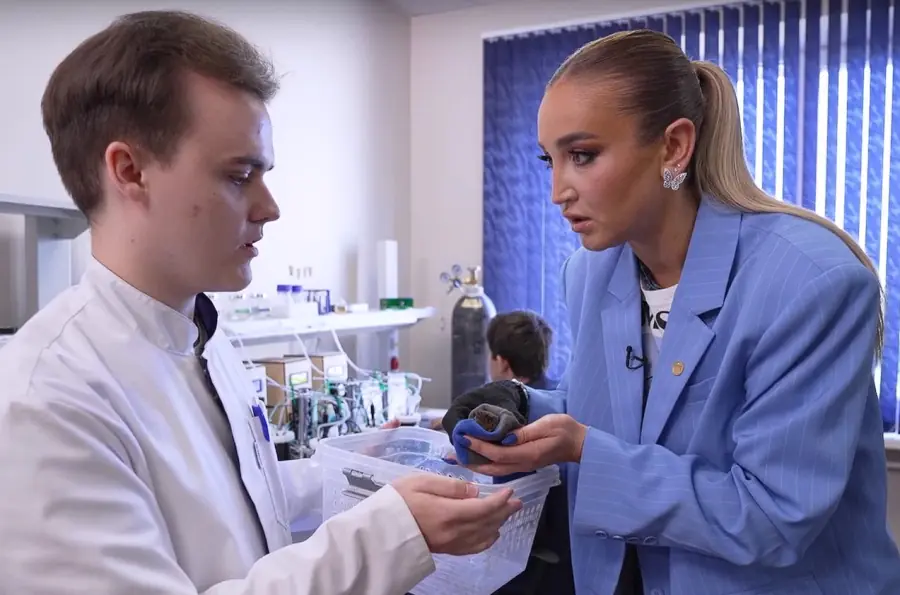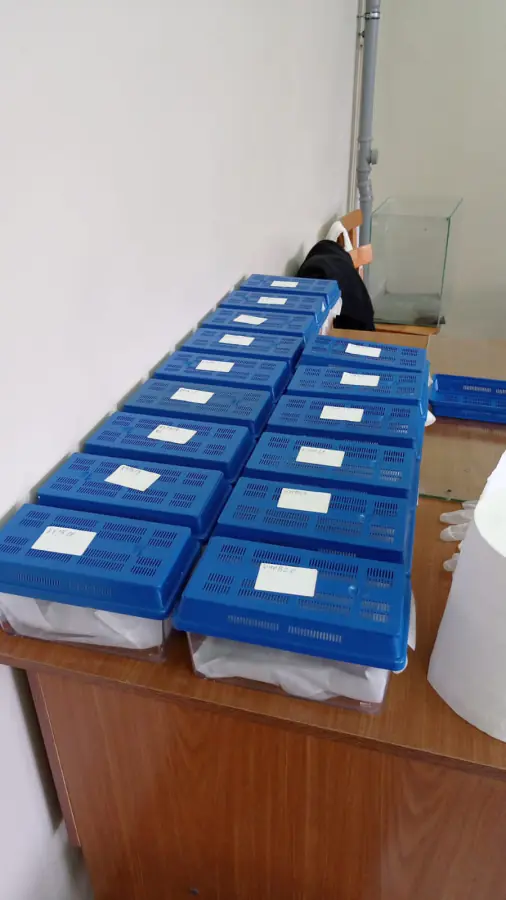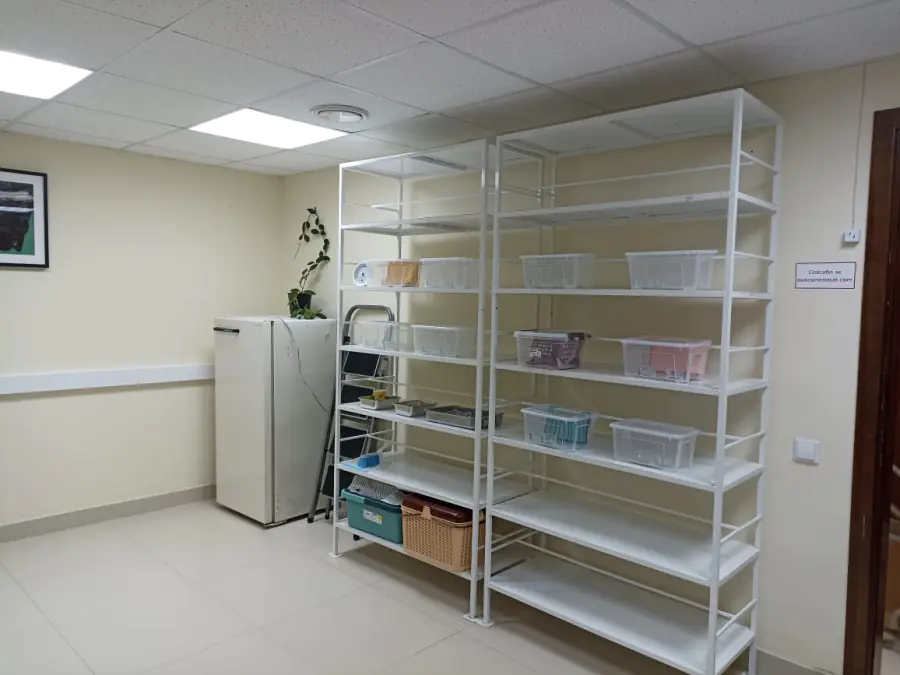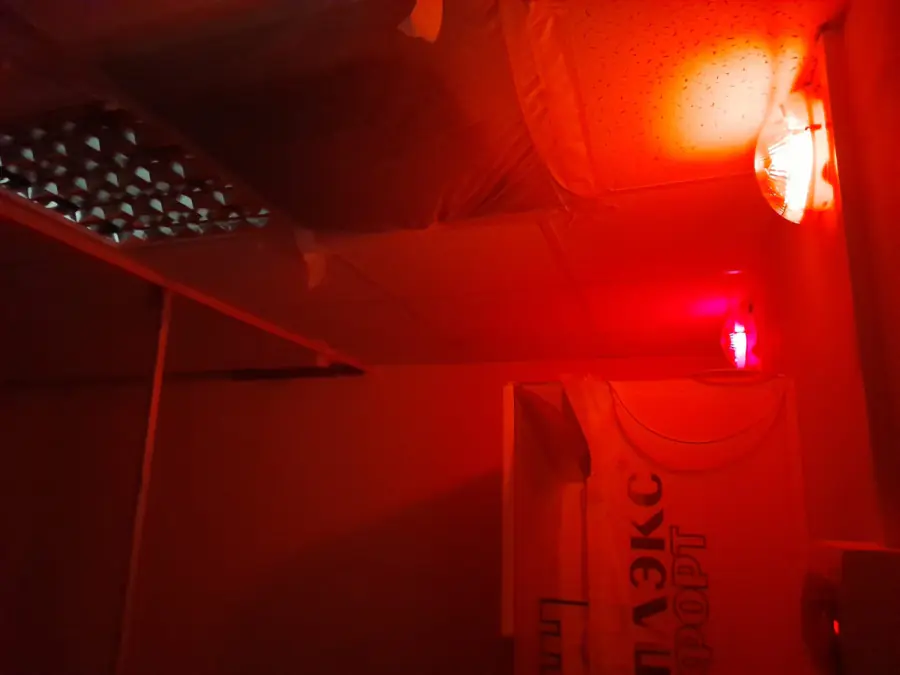Publications
83
Citations
727
h-index
16
Authorization required.

The DSTU Bat Research Center conducts research related to ecology, physiology, immunology, parasitology and microbiology of bats. The mission of the Center is to disseminate data on the importance of bats in urban ecosystems.
- Zoological methods
- Microbiological methods
- Molecular Biology
- Sequencing
- Epidemiological research methods
Research directions
Epizootological monitoring of white nose syndrome and other fungal infections of bats in the Rostov region
+
The bats (Chiroptera) are the second most diverse order of mammals, which ensures their key role in the functioning of ecosystems. It is known that the bats' immune system allows them to coexist with dangerous pathogens, which poses a great threat to other animals and humans. However, bats still have an infectious disease that is dangerous for them - white nose syndrome (RLS). Since RLS affects bats (Microchiroptera), which feed on insect pests of crops, outbreaks and the spread of RLS cause significant damage to the agro-industrial sector. The role of bats in agriculture is that, for example, one medium-sized bat can eat up to 1,000 insects per night. According to estimates, the RLS causes annual damage to the US economy equal to 3.9 billion dollars. The damage to the Canadian economy amounts to 2 billion US dollars. Despite the fact that no such assessments have been made about Russia, the RLS is an undeniable threat to the economy of our country, as the agricultural sector plays a significant role in social and economic development, especially in the south of the country, in one of the largest agricultural regions of the Russian Federation – in the Rostov region. The threat is becoming more real, given that, according to recent studies, RLS infection is already persistent in our latitudes.
The causative agent Pseudogymnoascus destructans infects hibernating bats, spreading across European and Asian populations. The bats' immune system is unable to eliminate the action of the pathogen due to low body temperature. As a result, to date, RLS has caused the mass deaths of more than 6 million bats worldwide (some estimates reach up to 7 million). The pathogen is characterized by a high rate of spread: the fungus spreads at a rate of about 200-900 km per year. As of 2023, RLS has been detected in 38 US states and 8 Canadian provinces. Such a rapid spread of the pathogen has an extremely detrimental effect on the populations of individual bat species. Populations of Myotis lucifugus species decreased by more than 90% in severely affected areas; Myotis septentrionalis species also decreased by more than 90% in some regions; Perimyotis subflavus species decreased by 75% or more in some regions.
The project is aimed at monitoring RLS and other fungal infections of bats in the Rostov region. The project will clarify the species diversity of bats and conduct epizootological monitoring of RLS and other fungal infections of bats using advanced statistical methods in one of the leading agricultural regions of Russia, where the disease poses a significant socio-economic threat. For the first time, a genomic and phylogenetic analysis of Pseudogymnoascus destructans will be performed when it is detected in bats of the Rostov region, which will determine the ways of infection spread in Russia and the world.
The use of advanced methods of genomic analysis and comparative bioinformatic approaches will allow us to identify the unique features of fungal strains affecting bats in Southern Russia and assess the molecular evolution of pathogens. This will help to develop and implement new strategies for monitoring and controlling RLS and other fungal infections of bats, which is important for preserving the species diversity of bats and the sustainability of ecosystems in the Rostov region and the Russian Federation as a whole.
Features of the immune system and intestinal microbiota of synanthropic bats as a basis for predicting new infections
+
The World Organization for Animal Health (International Epizootic Bureau) believes that wild animals are the most important and at the same time the most unexplored link in the emergence of new (emergent) infections, being one of the most important problems of modern veterinary medicine (https://rr-asia.oie.int/en/projects/wildlife-health /). Bats, the primary reservoir of many emerging human and productive animal infections, cause multibillion-dollar losses ($32.6 billion in 2015, according to the World Bank) for agriculture and healthcare. Due to their ability to fly and long lifespan (relative to other mammals of the same size), bats are able to spread viruses and bacteria over long distances in a long time dimension. The mechanisms that make these animals "living bioreactors" of new infectious agents are not fully understood. During flight, many free radicals are formed in the body of bats, which disrupt the work of viral polymerases, which in turn contributes to the occurrence of mutations in bat viruses. In addition to the peculiarities of energy metabolism, the emergence of new viruses in bats involves their unique immune response, which causes a reduced inflammatory response and prolonged asymptomatic viral transmission. Previously, we determined the promutagenic properties of intestinal fermented milk bacteria of bats, which indicates the potential involvement of the microbiota of these animals in the occurrence of mutations of their viruses and the appearance of variants capable of overcoming the interspecific barrier (Popov et al., SciRep, 2021).
The planned study is aimed at finding the features of the immune system and intestinal microbiota of synanthropic bats, which form the basis for the emergence of new infections. The project will include cytometric immunophenotyping of populations and subpopulations of immune system cells using cross-reactive antibodies and validation of the data obtained on the transcriptional expression of cellular markers; determination of the level of antibody production using immunofluorescence analysis; annotation of immune system regulatory genes in synanthropic bats; determination of the expression level of these genes; metagenomic analysis of the composition of intestinal bacterial and viral microbiota; phylogenetic analysis of detected microorganisms; determination of genotoxicity and properties of biofilms of intestinal bacteria. All these properties will be studied in the dynamics of the bat life cycle, including hibernation, since the effect of lowering the body temperature of these animals should certainly affect the properties of their immune system and intestinal microbiota. Currently, there is no specific data on the relationship between dynamic changes in the status of the immune system and the intestinal microbiota before, during and after bat hibernation, therefore, the proposed project is of great scientific importance for global science.
According to the results of the project, data will be obtained on the relationship between the status of the immune system of synanthropic bats and the composition and properties of the intestinal microbiota, which will ensure the biological safety of a common animal and human health, as it will allow developing measures to prevent and control emerging infections and reduce direct and indirect economic damage from them.
Publications and patents
Found
Nothing found, try to update filter.
Анжелика Борисовна Брень, Мария Сергеевна Мазанко, Евгения Валерьевна Празднова, Алексей Михайлович Ермаков, Игорь Витальевич Попов, Владимир Анатольевич Чистяков, Михаил Леонидович Чикиндас
RU2772351C1,
2022
2025
—
2026
| Попов Илья Витальевич
2023
—
2025
| Ермаков Алексей Михайлович
Lab address
пл. Гагарина, 1, корп. 6, Ростов-на-Дону
Authorization required.









